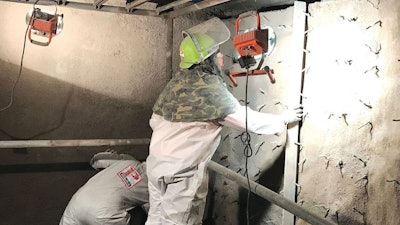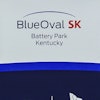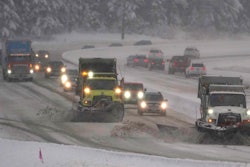
If your boilers are not running as efficiently as they had in the past or if you’re experiencing frequent boiler breakdowns, the boiler’s refractory may be to blame.
Refractory materials serve as protection to a boiler’s steel sections against destructive heat and chemical attack, while cutting down on the thermal loss that sometimes takes place during combustion.
Refractory is universally used to encapsulate steam drums, sections of water wall tubes and bottom welds on a firebox boiler or to protect the steel frame and plate steel from high heat deformation. Maintenance of refractory is absolutely crucial to avoiding boiler shutdowns and sustaining a boiler’s fuel efficiency.
No matter how high the quality of the refractory, degradation over time due to the heat, pressure, chemical processes and general wear that comes from frequent and high-intensity usage is difficult to avoid.
This degradation comes in many forms: refractory cracking, abrasion loss, spalling off a wall, fusing silica due to high hear flame impingement or chunks of refractory that work their way loose from vibration and thermal shock. Any sign of damage spotted during routine inspections or drops in boiler performance may indicate refractory degradation.
Issues with a boiler’s refractory require immediate action before they cause the plant’s production to come to a halt.
The Plibrico Company, a leading supplier of monolithic refractories and construction services, offers this list of common refractory problems along with cost-saving remedies to get your boiler back on-line.
Cracks
Cracking occurs in refractories due to simple expansion and contraction. The easiest way to control cracking is to allow for the linear expansion of the material.
By installing ceramic paper or ceramic/1900-degree board between material sections, the linear expansion presses against the insulation, thus allowing the refractory to expand.
The key problem with cracking is it allows for the heat to migrate to the inner shell and eventually burn up the anchor welded to the shell. This will negate the mechanical hold of the lining, leading to eventual failure.
Cracks may not always have to be patched in a refractory lining. When examining a small crack, check to see if there is any debris inside the crack. If the crack is 1/8th inch thick or less, there is a good chance that as it heats up to operating temperature, the refractory will expand and close the crack tight.
However, if the crack has debris inside and is larger than 1/8th inch, the crack will need to be repaired. A simple solution is to patch the crack with a high-quality mortar such as Plibrico Ultra Super Demon or a patching material such as Plicast Trowl Mix.
Typically, mortar will adequately cover a small crack. On the other hand, if the crack is wide and the mortar is pushed in too deep, the expansion of the refractory lining will crush the patching material and eventually it will fall out.
A better option is to install a ceramic fiber moldable material in the crack by trowel or caulk gun. After the moldable dries, apply a patching material over the crack.
The moldable will not get as hard as a patching compound and therefore allow for expansion. Meanwhile, the patching material you installed will harden and completely cover the crack.
Abrasion Loss
Abrasion loss occurs when the velocity of air, coal dust and water wear against the face of the refractory. Over time this will reduce the thickness of the lining. Abrasion loss occurs often in utility boilers, particularly on some styles of ash hoppers.
Thankfully, this is a fairly easy repair when the erosion has reached the anchors system in the lining. If the anchors were installed properly, the tips of stainless steel “V” style anchors will only be a couple of inches from the original face of the material.
Additional “V” anchors can be welded to the original anchors to increase the length to just below the face of the original thickness.
When an area is not overly large, a patching material such as Plicast Trowl Mix makes an excellent choice. However, if the area has several hundred square feet of material to fill, then a gunning material would achieve a better outcome.
There are circumstances where the refractory has suffered a very high amount of abrasion or a chemical attack has leached the silica out of the refractory. The proper repair in these cases is the use of a higher alumina material.
 Regular inspection, maintenance and repair of refractory will prevent these losses and keep the boiler – and your plant – up and running profitably.Plibrico Company
Regular inspection, maintenance and repair of refractory will prevent these losses and keep the boiler – and your plant – up and running profitably.Plibrico Company
Spalling Loss
Thermal spalling occurs when rapid changes in temperature causes a change of expansion in the refractory materials that results in a cracking and heaving in the lining.
This “worst case scenario” can cause all the refractory failures listed above and more. Sheets of refractory may fall off the walls or the lining might lose large chunks of material where the anchors do not hold.
If the combustion in the equipment cannot be modified, the lining design will need to be changed to accommodate the severe conditions.
Most certainly, a material with a higher thermal shock resistant formula will need to be installed, such as a plastic rammable refractory. Plastic refractory also has the advantage of immediate firing of the material for the bake-out process.
We recommend a good high alumina product such as Plibrico 80 AB, or if there were concerns about chemical attack due to alternative fuels, Plibrico 85-S Special. When casting or gunning is required, Plicast HyMOR 70, Pligun 70 KK or Plicast HyMOR TSR Plus KK are field-proven solutions.
Spalling does cause large refractory losses. It is extremely important that proper anchoring be performed before the refractory is installed. When steel shell is not exposed, additional material may have to be torn out.
Installation of “V” anchors up to 10” thick will need to be welded against the shell and block installation will be required before refractory installation. For lining thicknesses of 12” or thicker, “C” clips and ceramic anchors need to be installed. A combination of “V” anchors and ceramic anchors is also a very effective system.
Overfire Situations
Often you will see refractories that look as if they’ve melted and now have a glass type appearance and feel. This chemical phenomenon is caused by an overfire situation or flame impingement directly on the lining. Silica in the refractory fuses together at elevated temperatures, while the refractory behind the affected area tends to separate from the fused section and reduce the thickness of the overall lining.
Usually the area that has been overfired separates easily from unaffected refractory, creating a situation similar to spalling regarding needed repairs. If the situation of overheating or flame impingement cannot be rectified by the owner, different material must be considered for repairs for installation.
Materials with a 70-90% Alumina content should be considered for the hot face lining. Castable and gun mixes that would work well are Pligun 70 KK, Pligun 40, Plicast HyMOR 70 KK and Plicast 40.
For rammable plastic refractory, consider Plibrico 80 AB, Plibrico 85-S Special and Plibrico 90-S.
Outside Casing Situations
If ignored long enough, the adverse conditions listed in this article will affect the cold face lining and bring about severe deterioration. Often this will lead to damage to the lightweight back-up material or organic binder block insulation at the outside skin casing.
In this event, an effective repair method from the outside of the boiler is to pump a viscous insulating, which is usually manufactured from ceramic fiber material. It flows easily to fill all the voids behind the refractory.
A thermal measuring device will determine the exact area of heat loss. The advantage of this method is that the boiler can be running at the time, which saves the customer the time and cost of shutting down.
It is also much easier to identify the areas experiencing hot spots if the boiler is online. The method begins with a set of ½ inch black steel couplings being welded to the steel casing on a line across the affected area.
Next, the first coupling is attached to a hose and the material is pumped out of a bucket until the material runs out of the coupling adjacent to it. The first coupling is then unhooked from the hose and a plug is installed.
The next coupling is connected to the hose and from there, the process is repeated on down the line. The thermal measuring device will determine the affected areas and indicate how effective the repair is proceeding.
Conclusion
Degraded refractory material can lead to energy wastage, poor performance and even complete boiler shutdown. Every hour your boiler is out of operation can lead to serious loss of revenue.
Regular inspection, maintenance and repair of refractory will prevent these losses and keep the boiler – and your plant – up and running profitably.





















